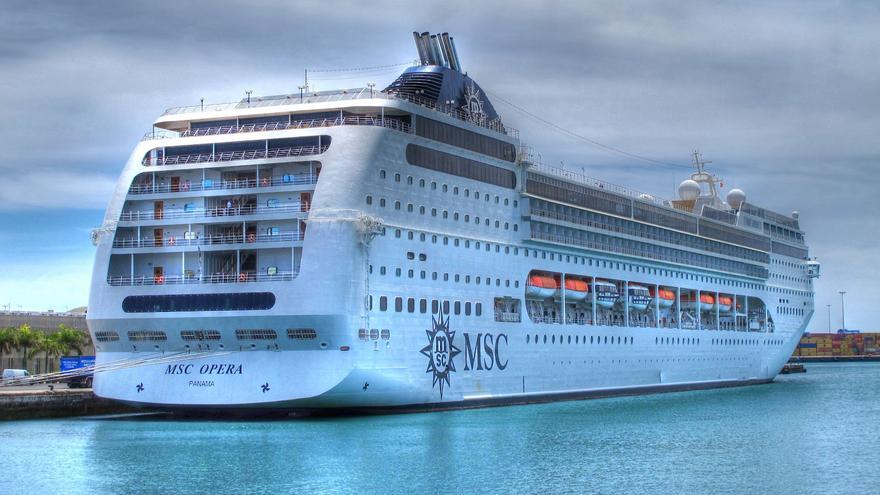
The MSC Cruises group will offer weekly cruises through the Canary Islands and Funchal (Portugal), with embarkation and disembarkation in Las Palmas de Gran Canaria and Santa Cruz de Tenerife, as announced by their commercial director in Spain, Pedro Pacheco.
With the ship ‘MSC Opera’, which has a capacity of nearly 2,000 passengers and 800 crew members, the company will return to the Canary route after ten years, aiming to expand its cruise market with an itinerary covering almost all the islands of the archipelago, except for La Gomera and El Hierro, according to Pacheco.
The cruise is designed for passengers from Europe and Spain, as well as the Canary Islands, and it will allow a “profound” exploration of a large part of the archipelago, with six stops at its ports and embarkation and disembarkation in both capitals, Pacheco announced in a virtual press conference.
In total, the cruise will last seven nights, with a price per person per night not exceeding 100 euros (including full board and entertainment), aboard the ‘MSC Opera’, a ship built in 2004 and renovated in 2016, for which 20 departures have been scheduled, concluding in early April.
Pacheco highlighted the convenience of Gran Canaria and Tenerife airports for connecting to many cities in the peninsula and the rest of Europe, enabling the weekly transfer of clients, with benefits for both Canary and mainland cruise-goers, as the company is considering absorbing part of the airfare cost.
It is estimated that around 3,000 people will pass through the capital islands each week, including cruise passengers and crew, generating significant economic impact, reflected as well in Lanzarote, Fuerteventura, and La Palma due to the planned stops.
The itinerary offered by MSC Cruises complements its winter program, providing access to beaches and nature that “have no comparison in Europe,” emphasized Pacheco, who also revealed that the trips will be linked to sporting events.
Gran Canaria has been added as an embarkation port, making a total of eight, including Tenerife, Spanish ports used by the group, a “leading cruise company” in their port infrastructures, Pacheco added.
According to Pacheco, collaboration with the port authorities of Las Palmas and Santa Cruz de Tenerife has facilitated the project, along with the airport infrastructure and frequencies serving the transfer of passengers from the peninsula and the rest of Europe.
Beatriz Calzada, president of the Port Authority of Las Palmas, expressed satisfaction over the selection of Port of La Luz as the embarkation and disembarkation point, as well as the planned stops at the other two ports in the province, underlining MSC’s commitment to the facilities, where the shipping company also leads container traffic.
Calzada stressed the significance of choosing a route in the Atlantic area as it will showcase cruise traffic in the islands and bring over 80,000 tourists of “quality, our main interest,” to the archipelago through MSC.
Pacheco indicated that each transiting cruise passenger spends an average of 80 euros per day, including the excursion, and when embarking and disembarking, the figure increases to nearly double due to accommodation costs, as per a 2019 study, so he expects the overall spending to be higher.
Around 40% of MSC’s cruise passengers participate in excursions at Spanish ports, while the rest stay on board or make their own plans upon disembarkation.
Pacheco also announced that a “very attractive” cruise for Canarian customers will operate from Santa Cruz de Tenerife to Venice starting from March 23.
The company, headquartered in Geneva, Switzerland, expects to have 23 ships deployed for cruises by 2025, with plans to expand its luxury line, Explora, introduced since August 2023.
Their plans until 2028 include incorporating four more environmentally friendly ships that will reduce CO2 emissions by 25%, adding 18,000 cabins and a 10 billion euro investment.
















